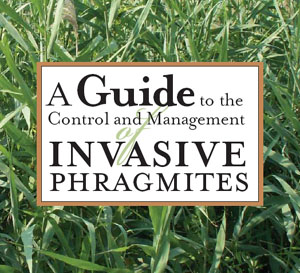*Restricted in Michigan
Phragmites (Phragmites australis), also known as the common reed, is an aggressive wetland invader that grows along the shorelines of water bodies or in water several feet deep. It is characterized by its towering height of up to 14 feet and its stiff wide leaves and hollow stem. Its feathery and drooping inflorescences (clusters of tiny flowers) are purplish when flowering and turn whitish, grayish, or brownish in fruit. Eventually, Phragmites become the sole dominant plant in many of these wetlands at the expense of native flora and animals dependent on these native habitats.
Table of Contents
Description
Stout, warm-season perennial grass ranging in height from 6-13 ft. Forms dense, impenetrable stands, in contrast with the native subspecies which occurs in a colony of scattered stems. Spreads easily and extensively by seed; also by an extensive, aggressive system of horizontal and vertical rhizomes that can live for 3-6 years.
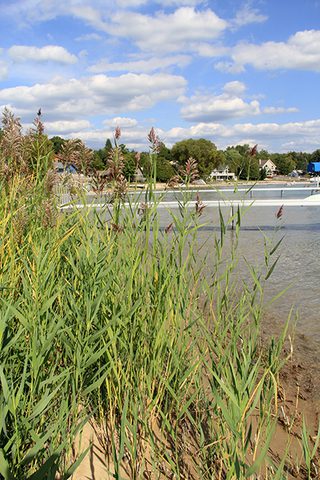
Identifying the Problem
Before taking any action, you should first determine whether the plants are native or invasive Phragmites. Use the following photos to help you identify the difference between native and introduced species of Phragmites.
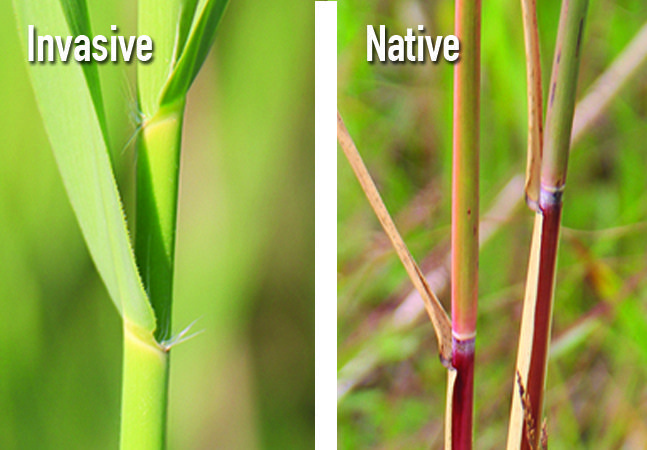
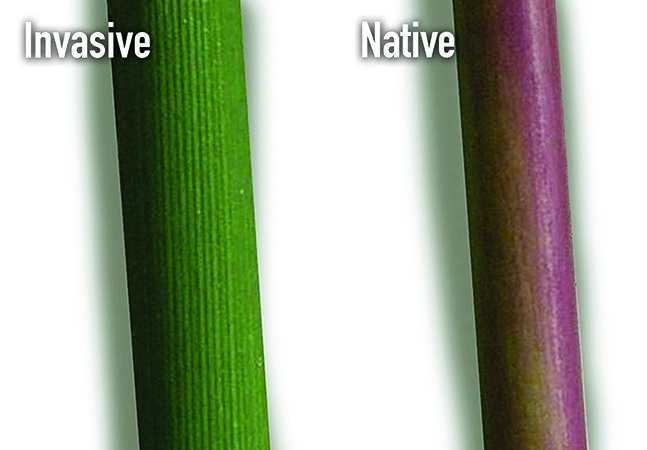
INVASIVE LEAVES
Flat, smooth leaf blades; 10 – 20 inches long, 0.4 – 1.4 inches wide. Leaf sheaths stay attached even after the stem dies. Flat, grey-green in color. They adhere tightly to the stem throughout the growing season and persist on the stem as long as it remains standing.
NATIVE LEAVES
Leaves are pale to yellow-green. The Sheaths fall off in the fall or flake off easily.
INVASIVE STEMS
Can reach 15 feet in height, are very rigid, and are slightly ridged with a rougher texture than the native stem.
NATIVE STEMS
Reddish-purple in color at the base. Stems are smooth to the touch, appear somewhat shiny and often have a red to chestnut color towards the base, particularly where the leaf sheaths have opened up or fallen away from the stem.
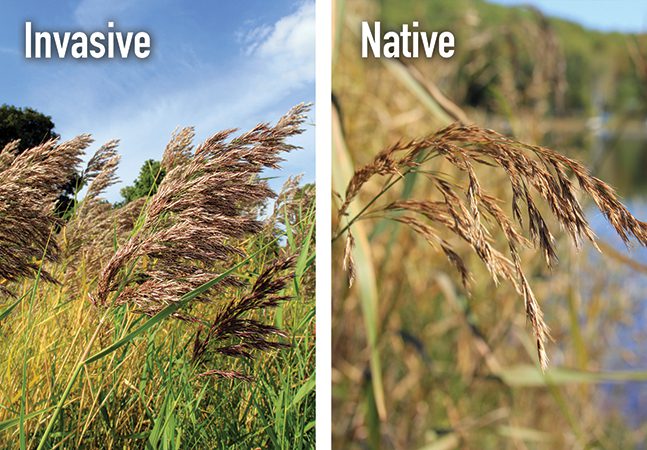
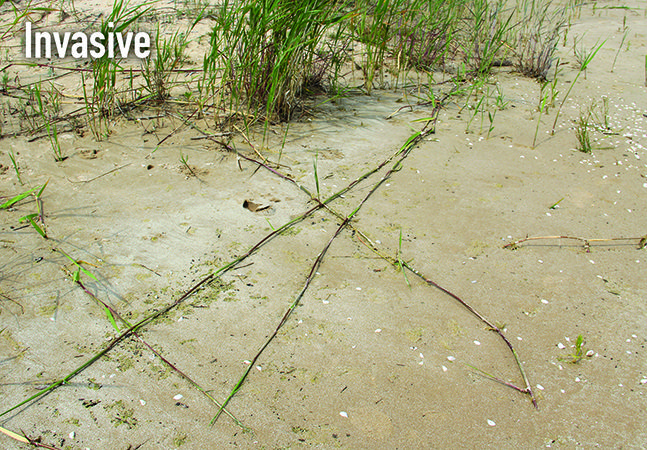
INVASIVE FLOWER, FRUIT, SEED HEAD
Flowers are dense branched clusters at the end of each stem, becoming open and feathery at maturity. Abundant seeds.
NATIVE FLOWER, FRUIT, SEED HEAD
The inflorescence plumes may be sparse in comparison to the exotic forms and may not persist though the winter
RHIZOMES / RUNNERS
Below ground, introduced Phragmites forms a dense network of roots and rhizomes which can extend downward several feet. It spreads horizontally by sending out rhizome runners which can grow 10 or more feet in a single growing season if conditions are optimal. Along rivers and coastal shorelines, fragments of rhizomes transported from infested sites far away settle in new spots and become rooted.
Additional Characteristics
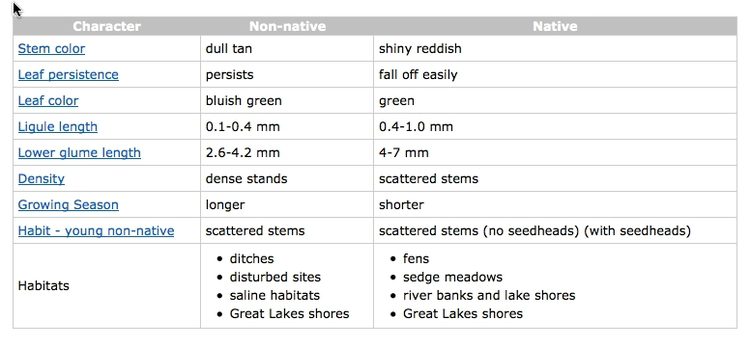
What To Do With Phragmites Along The Shoreline?
Landowners should follow the recommended control methods that include herbicide treatment followed by removal of the invasive plants and annual maintenance, as outlined in the publication A Guide to the Control and Management of Invasive Phragmites.
Mowing is not an effective control method for Phragmites as regeneration from rhizomes often causes an increase inPhragmites stand density, and can spread viable seeds. Mechanical methods must be used carefully to avoid stimulating growth of Phragmites. Mowing alone leaves the rhizomes behind. Regeneration from those rhizomes may cause an increase in stand density. Removal of Phragmites through digging and hand pulling is also ineffective due to the extensive root system created by this plant. Disturbing the soil through mechanized disking or raking may also contribute to rapid expansion of Phragmites and is not recommended.
Proper treatment of Phragmites uses a limited and targeted approved herbicide under an EGLE aquatic nuisance permit. Next steps can include removal of dead treated Phragmites stems or prescribed burn of the treated area.
Permits are required from ELGE for chemical treatments and for removal. For chemical treatment information including permitting requirements and blank permit application forms visitwww.michigan.gov/egleinlandlakes (Select Aquatic Nuisance Control) or contact the Aquatic Nuisance Control Program.
The use of a licensed applicator who is certified in aquatic pest management is recommended for herbicide application, especially in large, dense stands and in sensitive areas such as wetlands: Pesticide Application Businesses Licensed by the State of Michigan. (For Great Lakes shoreline, search by Category 5 for wet areas and Category 6, Right-of-Way, for dry areas).
REMEMBER – Before taking any action, you should first determine whether the plants are native or invasive Phragmites.
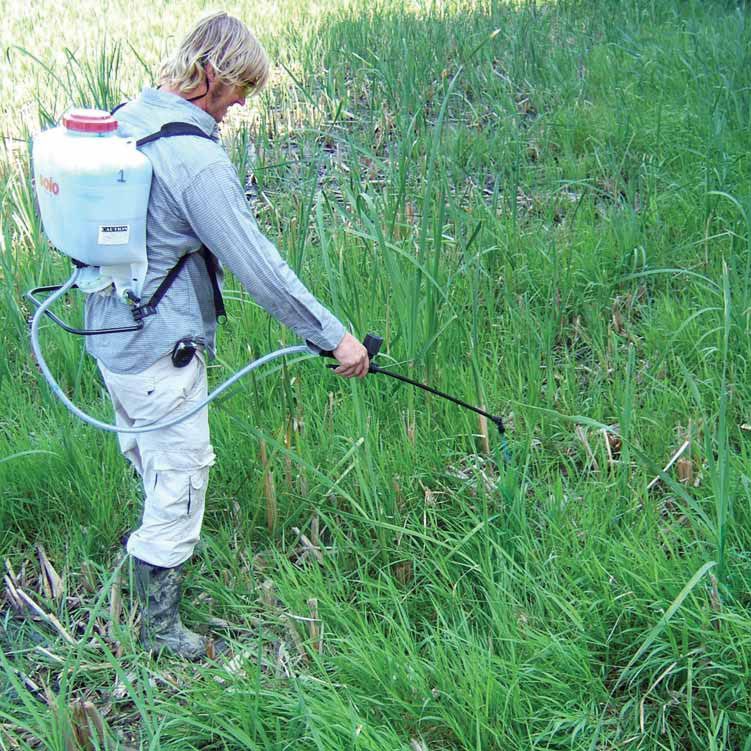
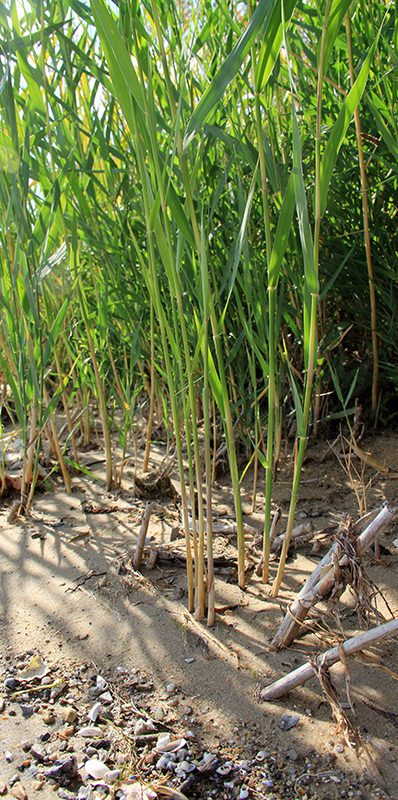
What To Do With Phragmites Along The Shoreline?
Landowners should follow the recommended control methods that include herbicide treatment followed by removal of the invasive plants and annual maintenance, as outlined in the publication A Guide to the Control and Management of Invasive Phragmites.
Mowing is not an effective control method for Phragmites as regeneration from rhizomes often causes an increase inPhragmites stand density, and can spread viable seeds. Mechanical methods must be used carefully to avoid stimulating growth of Phragmites. Mowing alone leaves the rhizomes behind. Regeneration from those rhizomes may cause an increase in stand density. Removal of Phragmites through digging and hand pulling is also ineffective due to the extensive root system created by this plant. Disturbing the soil through mechanized disking or raking may also contribute to rapid expansion of Phragmites and is not recommended.
Proper treatment of Phragmites uses a limited and targeted approved herbicide under an EGLE aquatic nuisance permit. Next steps can include removal of dead treated Phragmites stems or prescribed burn of the treated area.
Permits are required from ELGE for chemical treatments and for removal. For chemical treatment information including permitting requirements and blank permit application forms visitwww.michigan.gov/egleinlandlakes (Select Aquatic Nuisance Control) or contact the Aquatic Nuisance Control Program.
The use of a licensed applicator who is certified in aquatic pest management is recommended for herbicide application, especially in large, dense stands and in sensitive areas such as wetlands: Pesticide Application Businesses Licensed by the State of Michigan. (For Great Lakes shoreline, search by Category 5 for wet areas and Category 6, Right-of-Way, for dry areas).
REMEMBER – Before taking any action, you should first determine whether the plants are native or invasive Phragmites.
Who To Contact For Permit Information?
U.S. Army Corps of Engineers
Regulatory Staff: (313) 226-2218
www.lre.usace.army.mil/Missions/RegulatoryProgramandPermits.aspx
U.S. Fish and Wildlife Service
Region (3): IA, IL, IN,MI, MN, MO, OH, WI
Endangered Species Permit Office: (612) 713-5343
http://www.fws.gov/midwest/Endangered/
email: permitsR3ES@fws.gov
Michigan Department of Environment, Great Lakes, and Energy
Water Resources Division: (517) 373-1170
www.michigan.gov/jointpermit
Michigan Department of Environment, Great Lakes, and Energy
Aquatic Nuisance Control: (517)241-1554.
http://www.michigan.gov/egle/0,4561,7-135-3313_3681_3710—,00.html
Michigan Department of Natural Resources
Wildlife Division: (517) 373-1263
http://michigan.gov/dnr/0,4570,7-153-10370_12141_12168—,00.html
For more information:
Protecting What You Love
Video #9 – Phragmites
This is video #9 in the “Protecting What You Love” series created by Tip of the Mitt Watershed Council. Phragmites (Phragmites australis), also known as the common reed, is an aggressive wetland invader that grows along the shorelines of water bodies or in water several feet deep. Once introduced Phragmites invades a site it quickly can take over a marsh community, crowding out native plants, changing marsh hydrology, altering wildlife habitat, and increasing fire potential. This video will help you distinguish between native and non-native or invasive Phragmites. Early detection can help prevent the rapid spread of the aggressive invasive species.
Funding for this video was provided by:
Charlevoix County Community Foundation
Petoskey-Harbor Springs Area Community Foundation
Crouse Entertainment Group
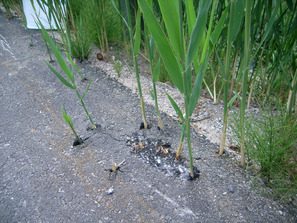
Insert Youtube Video
- A GUIDE to the Control and Management of Invasive Phragmites
- Michigan Department of Environment, Great Lakes, and Energy (EGLE) – Control and Management of Invasive Phragmites
- Chemical Treatment Permit Application Forms
- Michigan Department of Agriculture and Rural Development: Pesticide Application Businesses Currently Licensed to do Business in Michigan
- Approved Aquatic Herbicides
- Michigan Sea Grant
- Cornell University Ecology and Management of Invasive Plants Program – Phragmites
- Phragmites Field Guide: Distinguishing Native and Exotic Forms of Common Reed (Phragmites australis) in the United States
- Controlling Phragmites in Great Lakes Wetlands
- Great Lakes Phragmites Collaboration
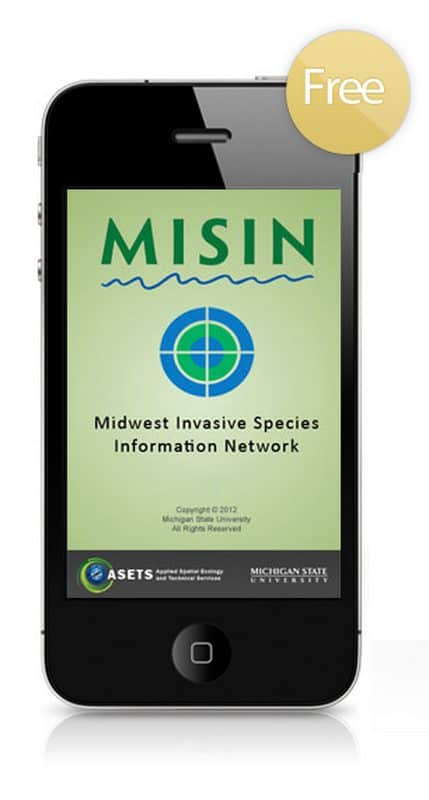
Reporting Invasive Species – FREE APP The MISIN smartphone app provides a mobile solution for the capture of invasive species field observation data. You can play an important role in the early detection and rapid response to new invasive threats in your area by contributing invasive species observations to the MISIN database.
|

